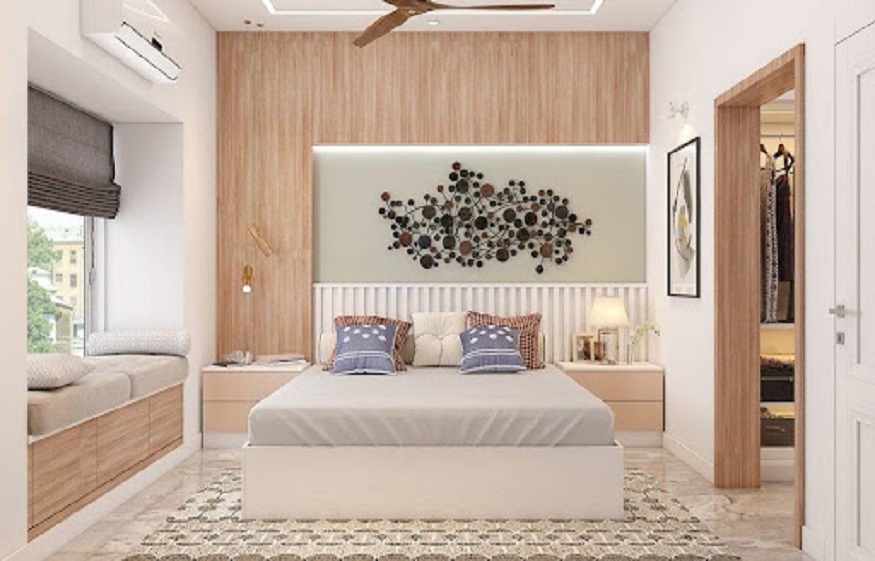Black trim interiors are gaining popularity for their bold, modern appeal and ability to define spaces in striking ways. Whether used in doors, windows, baseboards, or moldings, black trim adds a layer of sophistication that complements various styles. However, like any design trend, it comes with pros and cons. If you’re considering incorporating this sleek design choice into your home, it’s essential to weigh its impact on room designs, costs, and overall aesthetic.
Here’s what designers have to say, along with some expert tips to help you decide.
The Case for Black Trim
1. Creates Striking Visual Contrast
Black trim boldly frames architectural elements, making windows and doors pop, especially against lighter colors like white or neutral walls. For those looking to elevate room designs without overwhelming the space, black trim offers just the right amount of drama and focus. It works in both contemporary and traditional settings, bridging different decor styles seamlessly.
2. Adds Sophistication and Depth
Designers often recommend black trim to make a space feel grounded and elegant. For example, pairing black baseboards with monochromatic wall colors can add depth and dimension to the room. When used in moderation, black trim gives interiors a polished, tailored look that feels thoughtful and intentional. It’s an excellent choice for homeowners seeking a high-end feel without drastically altering their spaces.
The Potential Challenges
1. Can Overpower Smaller Spaces
While black trim can add elegance, it’s not always a one-size-fits-all solution for all room designs. For smaller rooms with limited natural light, black elements may feel heavy and shrink the perceived space. Having black trim in compact areas can sometimes minimize brightness, making the room feel closed in. Designers suggest balancing it with ample light-colored walls or strategic lighting to keep the space feeling open.
2. Higher Maintenance
Another consideration is the upkeep. Black shows dust, fingerprints, and scuffs more readily than lighter colors. This could increase the time and effort needed to keep your interiors looking pristine, especially in areas with heavy foot traffic like living rooms or hallways.
Budgeting for Black Trim
Transforming your home with black trim could impact the interior design for home cost, depending on the size of the project and the type of materials used. Here are a few considerations for managing expenses:
1. Paint vs. Replacement
Choosing to paint your existing trim black is a cost-effective way to achieve this look. However, replacing trim with new black moldings or custom details can significantly increase the interior design for home cost. Opt for paint-grade wood if you’re on a tighter budget, and ensure proper sanding and finishing for a professional result.
2. Strategic Placement
To control costs without sacrificing style, start with key focal areas. For example, framing windows in your living room or updating doorways with black trim can showcase this trend without requiring a full-scale renovation. This approach also ensures that the black accents feel intentional rather than overwhelming.
Tips for Incorporating Black Trim
1. Match It with Your Style
Black trim tends to suit a variety of room designs, from industrial lofts to Scandinavian or even farmhouse styles. Pair it with crisp white walls for a minimal look or balance it with warm wood tones for a more inviting, rustic vibe.
2. Use It as an Accent
If you’re hesitant to commit fully to black trim, try incorporating it sparingly in spaces like powder rooms or entryways. This will give you a taste of the style without over-committing and can be a smart step if you’re still deciding.
3. Layer with Color
To keep the space balanced, combine black trim with a cohesive color palette. Pair it with softer hues in furniture, rugs, or curtains to maintain harmony while letting the trim command attention.
4. Adequate Lighting
When working with black trim, designers emphasize the importance of proper lighting. Ensure the room is well-lit with both natural and artificial sources. This prevents black elements from making the space feel too dark or closed off.
Conclusion
Black trim interiors can transform room designs with their timeless edge and sophisticated flair. However, it’s important to consider the layout, size, and function of your space before deciding if this bold design choice is right for you. While there may be an impact on the interior design for home cost, strategic use of black trim can deliver high-end results without overextending your budget.
With the right balance of placement, lighting, and complementary elements, black trim can redefine your interiors to feel modern, chic, and effortlessly stylish. If in doubt, consult with a professional designer for guidance, and watch your home evolve into a beautifully curated masterpiece.




